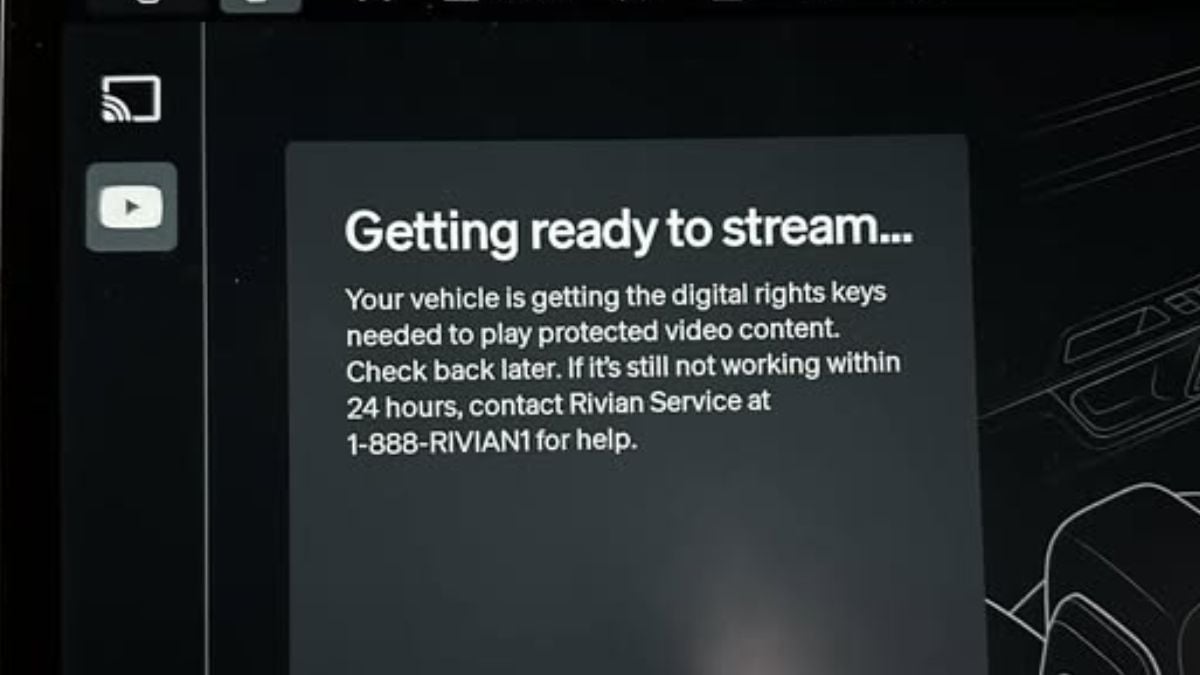This evening, while scrolling through the "RIVIAN Electric Vehicle Discussion" group, I came across an interesting post from a Rivian owner, David C. Sasser. He recently updated his vehicle’s software, hoping to enjoy video streaming on his in-car system. However, instead of entertainment, he was met with an error message. Seeking a quick resolution, he contacted Rivian customer service, only to be advised to reset the media system. Unfortunately, that didn’t fix the issue. Now, the dealership has requested that he make a two-hour drive for further diagnosis, leaving David understandably frustrated.
David shared his experience in the forum, stating: “Need some help. I’m all updated on the software and was looking forward to streaming video, but all I get is this message: I called service, and they had me do a media system reset with no resolution. Now they want me to drive two hours for a service appointment to get it working. Has anyone else run into this or have any recommendations?”

This incident highlights a growing issue among EV owners, software updates that promise enhancements but occasionally introduce new problems. As Rivian owners have expressed in multiple forums, software-based fixes can be a double-edged sword. While over-the-air (OTA) updates can bring new features and improvements, they sometimes cause unexpected technical glitches. One Rivian owner recently voiced concerns over changes to the second-generation R1T, emphasizing the importance of balancing software innovation with reliability.
The Challenges of EV Software Updates
Rivian, like other EV manufacturers, relies on OTA updates to improve vehicle performance, introduce new features, and fix bugs. However, as seen in David’s case, sometimes these updates create new headaches for owners. A recent EV breakdown on a busy highway demonstrated how software issues can unexpectedly leave owners stranded, raising concerns about long-term reliability.
In David’s situation, the frustration comes from both the unresolved issue and the inconvenience of having to drive two hours just to get it fixed. Long service trips for software-related problems are not unique to Rivian, other automakers have faced similar challenges, where simple issues require in-person diagnostics instead of remote solutions.
The Growing Dependence on Customer Service for Fixes
Many Rivian owners have reported mixed experiences when dealing with customer support. While some have praised the brand for its responsiveness, others, like David, find the troubleshooting process frustrating. Another Rivian owner shared a similar experience after a phone key issue following a recent update, where the suggested solution ultimately led to an even bigger inconvenience.
This raises an important question: Should EV manufacturers do more to ensure that software fixes can be handled remotely? For many traditional car issues, owners could rely on mechanics or even self-repairs. However, with EVs, particularly high-tech models like the Rivian R1T and R1S, software troubleshooting often requires specialized knowledge and tools only available at service centers.
The Bigger Picture: EV Travel Challenges and Reliability Concerns
David’s case also touches on a broader issue, how inconvenient software-related failures can impact long-distance travel. Many Rivian owners plan extensive road trips with their electric trucks, relying on software for route planning, charging station availability, and entertainment. A recent article on planning a long trip with a Rivian highlighted how unpredictable software behavior can create significant challenges for travelers.
For EV drivers, a system failure can mean more than just an inconvenience, it can disrupt travel plans, force unplanned detours, and even lead to costly towing fees. On the flip side, when everything works smoothly, Rivian owners have reported impressive long-haul journeys, such as a 1,300-mile trip using Tesla chargers.
A Moral Lesson for EV Owners
David’s experience serves as a reminder that while technology can enhance our driving experience, it’s not always perfect. EV owners should be prepared for occasional software hiccups and stay informed about possible troubleshooting steps. Manufacturers, on the other hand, should focus on refining their customer service and remote diagnostic capabilities to minimize inconveniences for owners.
As Rivian continues to evolve, customer feedback will be crucial in shaping future updates and service experiences. While software-driven cars offer a glimpse into the future of mobility, there’s still work to be done in ensuring reliability and ease of use for all owners.
Have You Experienced Similar Issues?
Have you ever encountered a software problem with your Rivian or another EV that required an inconvenient service trip? What are your thoughts on how EV manufacturers should handle software-related fixes? Please share your experiences in the comments below!
Narek Hareyan is a young automotive journalist with experience in a golf cart dealership and an interest in the automotive industry. Follow Narek on X for daily news coverage about cars.











